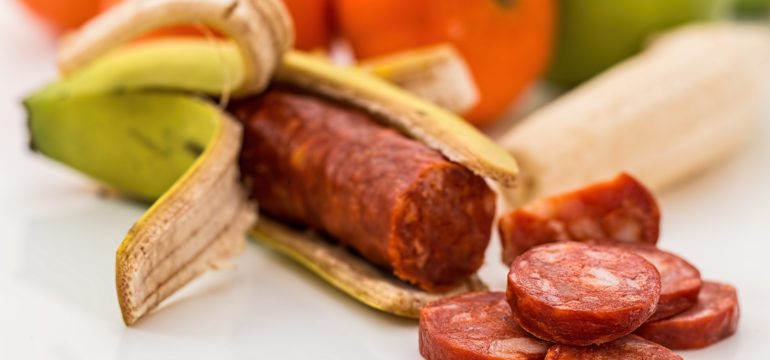By Emanueli Backes
What awaits us
The world’s population is predicted to reach 9.1 billion people by 2050 – which is 1.3 billion people more than today – according to the Food and Agriculture Organization of the United Nations (FAO) [1]. However, this huge increase comes against the current capacity of food production to supply the world demand for food, especially regarding protein. In a recent symposium about Future Foods hosted at ILSI, North America, scientists have pointed that, in the most chaotic scenarios, critical decisions regarding who receives limited protein supplies to sustain our planet is going to be made in order to feed our hungry population [2].
Based on this, agronomists, nutritionists, and food scientists have begun exploring opportunities to increase our protein supply before we have to come to this [2]. So far, different sources of protein have been evaluated as alternatives to supply essential amino acids, as well as maintain sustenance. Among them, are included algae, insects, various plants, fruits, and vegetables – being the vegetable ones the most popular source of non-animal proteins, with a constantly rising market.

Will the population accept alternative proteins?
Although several alternative sources of protein have been investigated, consumers’ acceptance is crucial for this “future-foods” success. But are we willing to eat this unusual stuff? In fact, during the Future Food Symposium, Dr. Hallman – an academic psychologist from Rutgers University – stated some important insights about it. According to him, the main matter required for food acceptance is its benefits. Consumers must be sure that the benefits they desired are being fulfilled with the food product, but also that the underlying processes are safe [2].
However, it is not that simple. Eating practices are complex and influenced by several interaction factors, such as social context, beliefs, taste preferences, and culinary traditions [3]. The main challenges are technological, lack of information, and consumerism [3]. In fact, people often rely on information from trusted others, external cues (including food labels, and the way that a product looks, smells, and tastes), as well as shared, culturally constructed ideas about what is good, safe, and acceptable to eat [2].
This socio-cultural setting makes it difficult for consumers to accept or transition to alternative protein sources. However, marketing is set as a good ally to improve their consumption, leading to an increase in demand and development in the production of meat-based alternatives [3]. Finally, scientists have to be conscious that communicating scientific facts about this unusual food for general population is important, but more than just that, people’s values and emotions have to be taken into account in order to understand and address consumer concerns [2].

Challenges and opportunities
Edible insects, algae, cultured meats, and plants are stated as promising sources of alternative protein. However, their introduction into the human diet is a long and progressive process [2]. First, it is crucial to ensure the safety of the raw material. Not only the protein quality, but all the other compounds contained in them must have their health-related outcomes well known [2].
Second, acceptance is decisive. It is important to have in mind that gaining consumer’s acceptance takes time [2]. Achieving pleasant sensory properties is another challenge in this task, since it is crucial for a food product success. Additionally, the nutritional and functional properties have to be provided from these foods in order to address consumers’ desires [2].
Finally, it is necessary to regulate this type of food under the health authorities. Establishing minimum standards of identity and quality is fundamental to the success of this product segment in the market.
As you can see, this task is far from easy. There is a need for further research and strong communication with the public [2]. Food, agriculture, and health professionals are working together to provide us a better future. So far, while new alternative proteins are searched, the public perception about these foods also have to be shaped in order to achieve success and acceptance [2].
References
[1] FAO. Food and Agriculture Organization of the United Nations. How to feed the worlt in 2050. <http://www.fao.org/fileadmin/templates/wsfs/docs/expert_paper/How_to_Feed_the_World_in_2050.pdf>
[2] Karmaus, A. L., Jones, W. (2021). Future foods symposium on alternative proteins: Workshop proceedings. Trends in Food Science & Technology.
[3] Giacomelli, F. O., Pinton, M. B., Silva, S. B. S., Thiel S. R., Campagnol, P. C. B. (2020). Alternative protein inovation: a review about plantbased food. Congresso Internacional da Agroindústria (CIAGRO).

Emanueli Backes | Linkedin
SMF Blog Writer
Emanueli is a Brazilian enthusiastic for food science and technologies. Backes graduated with a degree in Food Engineering and Masters in Quality and Food Safety. She is now pursuing her PhD in Food Science. Backes research focus is on organic synthesis of new antioxidant compounds through enzymatic reactions.
Emanueli loves education and science popularization; she believes everything can be demystified, uncomplicated, and taught.






Leave a Reply